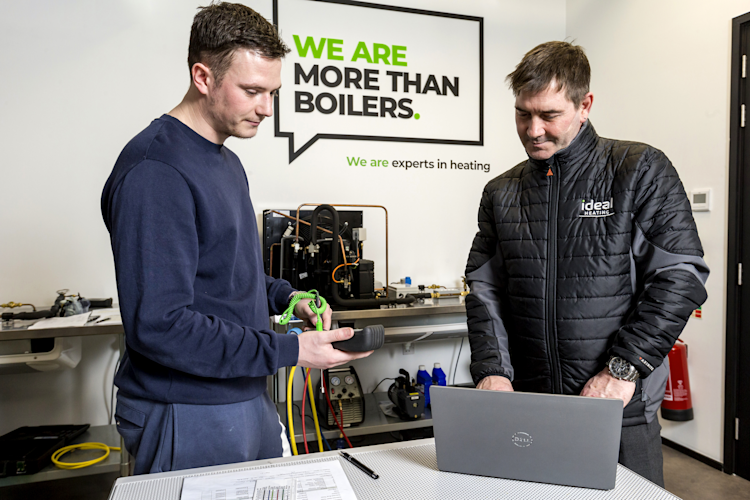
What you need to know about Part L changes in Wales and Scotland
The early Summer of 2022 saw a raft of changes to building regulations in England for the conservation of fuel and power under Part L, holding significant implications for the design and specification of heating systems.
It’s now the turn of Wales and Scotland to implement their own changes to Part L. The devolved UK nations hold the power to determine building regulations, which often follow a similar direction to England. Yet some significant differences risk catching out anyone who operates locally or across borders.
So, what do you need to know?
Wales: Spot the difference
The Wales Part L closely follows changes in England and is set to be implemented 23rd November 2022.
Headline changes to its previous iteration for New Builds includes:
A new minimum energy efficiency standard introduced for New Builds set at a minimum Energy Performance Certificate (EPC) rating of B, or 81.
Mandatory airtightness testing will be introduced for all new homes
A Primary Energy compliance metric has been introduced alongside the existing carbon emissions standard
Overheating risk has been addressed in its own approved document (Part O) and is no longer featured in Part L and SAP
The SAP 10 methodology will be adopted like in England.
Transitional arrangements are 12 months as per England Part L
Where a gas combination boiler is used, the boiler type should be selected to modulate down to the typical heating load of the dwelling.
Where a wet heating system is newly installed or fully replaces in an existing dwelling, all parts of the system should be sized to enable a maximum flow temperature of 55°C or lower.
It also includes a target to reduce carbon emissions by 37% compared to 2014 Part L standards. That compares to a 31% reduction in carbon emissions required in the England update. But other changes are largely in line with England.
For New Build and retrofit, there is increased guidance around sizing the appliance and system:
Scotland, a more rigorous approach?
The new Scottish standards, due to be implemented 1st December 2022, share many of the same updates as its English and Welsh counterparts including:
The introduction of a Delivered Energy compliance metric alongside the existing carbon emissions standard
Mandatory airtightness testing on all new homes
Adopting SAP10 methodology
Tightened limiting fabric standards for thermal elements for new homes and work to existing homes
Overheating risk now addressed in standard 3.28 and no longer assessed in SAP assessments
Where they differ includes a target to reduce carbon emissions by 32% compared with the 2015 iteration.
Scotland’s guidance around sizing the appliance and the system also uses slightly different wording. They state that systems should not be significantly oversized, and where a wet heating system is being newly installed, or where replacement in an existing dwelling includes both the heating appliance and the majority of the emitters (e.g. emitters providing more than 50% of the calculated heat demand), the system should be configured and sized to allow the space heating system to operate effectively, and in a manner which meets the heating needs of the dwelling, based upon a mean water temperature of 50 °C or lower and a flow/return ΔT of 10 ºC or lower.
Where it is not feasible to install a space heating system which can operate at this temperature (for example, where there is insufficient space for larger radiators, or the existing distribution system is provided by higher temperature heat from a low carbon district heat network) the system should be designed to the lowest design temperature possible which will still meet the heating needs of the dwelling.
NOTE: Low temperature requirements apply to space heating only.
Wales and Scotland welcome Boiler Plus
The devolved nations will both introduce the Boiler Plus legislation almost five years after it was introduced in England.
Boiler Plus sets out requirements for gas engineers fitting new boilers and heating controls with the aim of reducing domestic carbon emissions and encouraging energy efficiency.
These headline changes for both nations include:
Gas boilers installed into existing systems should have an ErP efficiency of at least 92%.
Gas and oil boilers should be installed with time and temperature controls, and replacement Combi boilers should be installed with an additional energy efficiency measure, for example smart controls with optimisation and automation functions.
For Scotland, Boiler Plus will be implemented in December through inclusion in the Domestic Building Services Compliance Guide. The biggest difference is that System and Heat only boiler replacements must also include additional energy efficiency measures in Scotland, not just Combi’s as is the case in England and Wales. They could include:
Flue gas heat recovery
Weather compensation
Load compensation
Smart controls with automation and optimisation functions
Wales defines smart controls differently, requiring that they provide remote access. This stop controls claiming to be ‘smart’ when they are not internet connected.
The Halo WiFi range is the Ideal solution for these new regulations in the replacement market, available in a Combi and Heat & System model. Halo is engineered to work with your Ideal boiler to optimise performance in terms of energy efficiency, whilst giving you control of your heating with the intuitive Halo app. Halo acts as an additional energy efficiency measure that conforms with the Boiler Plus scheme.
Confused? Speak to the Ideal team:


















